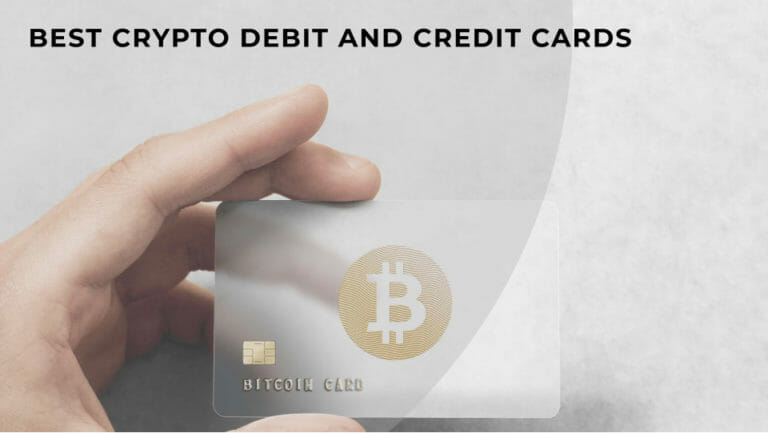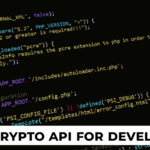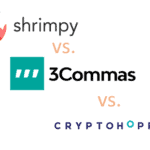Imagine waking up to find your bank account frozen without warning. For many Indian crypto users, this nightmare became reality after using peer-to-peer (P2P) trading on platforms like Binance P2P.
P2P marketplaces match buyers and sellers of crypto, often with bank transfers in exchange for USDT or Bitcoin. It’s convenient and was perfectly legal – until it goes wrong.
The danger? Sometimes the money you receive for your crypto is “bad money” – funds from a scam or crime. Banks and cyber police then trace that fraud and lock down every account that handled those funds, even if you had no idea.
In this article, we’ll unpack how these P2P scams operate, share real stories of Indian users who got caught in the crossfire, and guide you on what to do if it happens to you. We’ll also explore a safer alternative for cashing out crypto – crypto debit cards – and compare products like RedotPay and others as a way to avoid dealing with unknown bank transfers.
Peer-to-peer crypto trading gained popularity in India, especially after direct bank crypto purchases became harder. It allows buying and selling crypto directly with another person’s bank transfer. But with rising scams, this convenience can turn into a trap. Let’s see how these scams work.
Table of Contents
How P2P Crypto Scams Unfold: “Bad Money” in Your Bank
P2P scams usually involve a fraudster, an innocent crypto trader, and an unsuspecting victim. Here’s a typical scam scenario:
- A scammer tricks a victim (Person A) – such as with a lottery scam or fake investment offer. Person A is told to transfer money to claim a reward or get returns.
- The scammer uses a P2P trader (Person B) as a money mule. The scammer finds a legit crypto seller on Binance P2P – perhaps you – and places an order to buy ₹80,000 worth of USDT. He gives your bank details to Person A and convinces them to send ₹80,000 to your account.
- You receive ₹80,000 from Person A and, thinking the buyer sent the money, you release USDT to the scammer.
- The scammer runs away with the crypto. Person A realizes the fraud and reports it to the police.
- Police trace the money and see it entered your account. Your account gets flagged and frozen.
From the police’s perspective, your account received tainted money. Even if you had no idea it was scam-related, your funds can be frozen under investigation.
This process repeats across India. Innocent traders, trying to legally convert crypto, are stuck when scammers use them unknowingly to launder money.
Real Stories from India
Ajay’s Story – Uttar Pradesh
Ajay was a regular Binance P2P user. In November 2024, he did a few trades. Months later, ₹47,000 across his bank accounts were frozen. The cybercrime cell said two cases – one in Punjab and one in Chhattisgarh – were linked to his accounts. Ajay had unknowingly received scam money through P2P buyers. Despite having no role in the fraud, he was told, “You may never get it back.”
Nikhil’s Story – West Bengal
Nikhil used Binance P2P to earn extra income. After trading, his HDFC account was frozen with ₹3,115 locked. He later learned a ₹29,000 payment linked to one of his trades was part of a cybercrime case in Hyderabad. The buyer used stolen funds. Nikhil spent over 3 weeks dealing with police and updating KYC before his account was restored.
Michael’s Story – Kerala
Michael, from Palakkad, had ₹8 lakh frozen after police linked him to multiple scam fund flows. He had received tainted rupees from scammers, despite using full KYC procedures. The police froze his entire savings, affecting his ability to repay loans. The freeze highlighted poor coordination between state cybercrime cells.
These stories are not isolated. Cybercrime complaints have skyrocketed across India. Traders who do everything legally are paying the price for someone else’s crime.
Legal Explanation: Why Banks Freeze Your Account
When police suspect scam money passed through an account, they use Section 102 of the CrPC (Code of Criminal Procedure) to freeze it. Under this law, any property (including money) that may be linked to a crime can be seized.
Even if only ₹10,000 in your account is linked to the scam, often the entire account gets frozen. Police then notify the bank to lock it until the investigation concludes. This can take weeks or even months.
Recent court rulings have stated that only the disputed amount should be frozen – not the whole account. Still, most users aren’t even informed of the freeze until it happens.
What To Do If Your Account Is Frozen
If your account gets frozen due to a P2P crypto transaction:
- Contact Your Bank – Ask for details about the freeze and get the police station name or case number.
- Call the Cybercrime Helpline (1930) – Confirm the complaint and get the Investigating Officer’s contact.
- Reach Out to the IO (carefully) – Explain your situation and request guidance. Be polite and cooperative.
- Hire a Cybercrime Lawyer – They’ll guide you and handle communication with authorities.
- Prepare Proof – Gather screenshots of P2P chats, transaction IDs, and bank statements.
- Request an Unfreeze – After submitting documents, ask the police to send a release letter to your bank.
- Legal Action (if needed) – If the freeze is prolonged, your lawyer can file a court petition.
- Stay Documented – Keep records of every conversation, email, and visit.
Innocent traders often get cleared, but it can be a lengthy process. Be patient but persistent.
A Safer Alternative: Use Crypto Debit Cards
To avoid P2P scams entirely, Indian users can use crypto debit cards. These are cards you load with your own crypto and spend like regular Visa or Mastercard.
How They Work?
- Sign up and complete KYC with a crypto card provider.
- Load BTC, ETH, or USDT into the card wallet.
- Spend online or in-store; withdraw cash from ATMs.
- The provider auto-converts crypto to fiat (USD/EUR/INR).
Because the source of money is your own crypto, not a third-party bank transfer, you avoid risk of receiving stolen funds.
Advantages?
- No unknown people sending you money.
- Spend crypto easily in India and globally.
- Works for online shopping, ATMs, and POS.
- Avoids account freeze risk.
| Feature | RedotPay | Crypto.com | Nexo Card | Binance Card |
|---|---|---|---|---|
| Available in India | Yes | No | No | No |
| Supported Coins | BTC, ETH, USDT, USDC | BTC, ETH, LTC, XRP, CRO | BTC, ETH, USDT, USDC, NEXO | BNB, BTC, ETH, SXP, USDT, BUSD |
| Card Types | Virtual ($10), Physical ($100) | Physical (Free–$400 staking required) | Virtual and Physical (Free) | Physical (Free–staking required) |
| Monthly Fees | None | None | None | None |
| ATM Withdrawals | Supported | Supported | Up to €10,000/month with cashback | Supported (limits depend on tier) |
| Daily Limits | Up to $500,000 spend, $10,000 ATM | Up to $25,000 spend, $1,000 ATM (basic tier) | €10,000/day ATM, unlimited POS | Varies by tier, up to €8,700/day spend |
| KYC | Required | Required | Required | Required |
| FX Fees | ~1% | 0.5–1% | No FX fees in EUR, 0–1.49% in others | 0.9% to 2% depending on currency |
| Google/Apple Pay | Yes | Yes | Yes | Yes (select regions) |
These cards offer a cleaner, safer way to spend your crypto without involving strangers or P2P transfers. They’re not free of all fees, but they significantly reduce your risk of legal trouble or account freezes.
Conclusion: Stay Safe, Stay Informed
Crypto is exciting, but not without dangers. In India, P2P trading can expose you to scams beyond your control. Innocent people have lost access to their savings due to tainted money unknowingly received.
If you still use P2P, always:
- Trade small amounts.
- Check the sender’s name.
- Avoid high-value trades with unknown users.
Better yet, switch to safer tools like crypto cards. They provide more control, reduce fraud risk, and help you convert and spend crypto with peace of mind.
Stay safe, trade smart, and don’t let someone else’s scam freeze your future.







